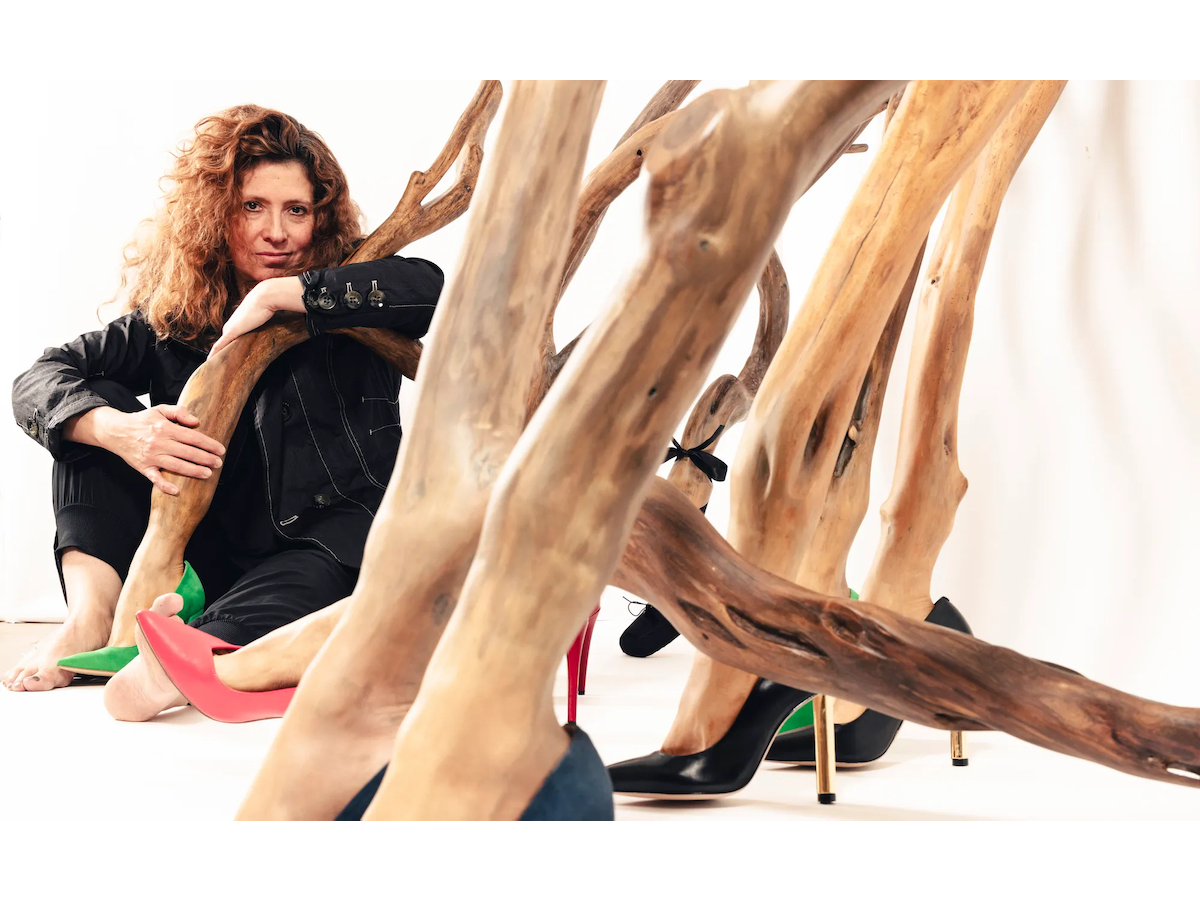
“I always wanted to be a painter,” Erika Harrsch told me over Zoom from her studio in Cold Springs, New York. “I was five or six years old and already I knew I wanted to be a painter.” Though painting is the nucleus of Harrsch’s practice, the artist has integrated a multidisciplinary approach to her work. With upcoming projects at Instituto Cervantes in June and Museo de las Americas in October, the artist continues to employ new media, sound, moving image, and sculpture into a body of work that plumbs nuanced conversations around sex, desire, gender, and fragility, all while embedding those narratives within stories of migration and identity.
The Mexico City-born artist has let her work and appetite for exploration lead her all over the world, spending the past two decades in New York City before moving to Cold Springs in the Hudson Valley, where she now resides. When she first arrived in New York in the early 2000s, Harrsch’s work was met with skepticism and a degree of sexist reductivity by the siloed market. “Commercially, it was difficult. I was told by great galleries, ‘I don’t know how to grab you,’” she said, referring to the wide range of her work. “They would tell me, ‘You do so many different things — do we sell you as a painter, do we sell you as a photographer?’”
The range of mediums Harrsch has used and continues to experiment with, coupled with her richly tactile and opulently lush visual style, also led some to label the artist as merely making aesthetically driven, “pretty” art. Her signature use of butterflies — specifically, replacing the body of the butterfly with images of women’s genitalia she photographed — was meant to serve as a vehicle to tell stories about migration and movement, gender and desire, yet some were quick to label it as “cute.”



“At the beginning of my career, I got more of that sense of ‘oh, cute,’ in regard to the butterflies and that approach,” she said. That all changed when the artist created her installation, “United States of North America Passport,” an ongoing installation project begun in 2009. “When I incorporated the butterfly into the passport project, the perception changed,” she shared. “I started hearing: ‘So the butterfly is not only the feminine, the genital, it’s political,’” shared Harrsch. “To which I said, ‘It was always a political project.’”
That’s not to say that even such an overtly political project was immediately understood. “People then thought it was about the aesthetics of the wings of the butterflies themselves,” the artist says, “or the beauty and the seduction of the genitalia.” The installation, which the artist has staged internationally, compresses the viewer into a passport office. In that space, Harrsch interrogates the arbitrary borders between Canada and the United States, the United States and Mexico, expanding the territories into an imagined pan-continental country: the United States of North America. Harrsch calls into question the North American Free Trade Agreement signed in 1992, which allows for the transport of goods across national lines, illuminating the privileges experienced by inanimate materials but not afforded to certain groups of people.
“I used the butterfly at the center of the passport as an emblematic representation of a unified North American continent,” Harrsch says, noting that the monarch butterfly’s migration pattern spreads across the three neighboring countries as the insects seek different territories to manage their life transitions and hibernation cycles. The work looks at the realities of immigration policies, specifically the lived experience of immigrant women, namely women of color, who must, as the artist says, “reconstitute their own identity in accordance to the territory they are living in.”


In Harrsch’s current body of work, The Forest of Probable Women (2024) the artist embraces mixed media and multidisciplinarity to create works that negate the premise of human supremacy over the natural world. The branch-like legs fitted with high-heeled shoes combine painting, found objects, and organic materials. The “tree women,” as the artist calls them, are symbionts between plant, animal, and human. “I am interested in creating speculative fantasies that reveal the complexity of how women are perceived and how they see the world,” says Harrsch. In the work, the artist envisions ethical interspecies cooperation in mutually consensual and beneficial ecosystems, while also representing the empowerment of women, gender fluidity, and sexuality as a portal to freedom.
Harrsch’s practice continues to build upon itself, allowing her layered narratives and varied mediums to evolve over time. “Everything I’ve done informs my painting, informs my photography, informs my three-dimensional projects,” she says. That continued retrofitting and evolution of ideas has allowed the artist to have a nimbleness that feels sustained, powerful, and continually defiant of categorization.




